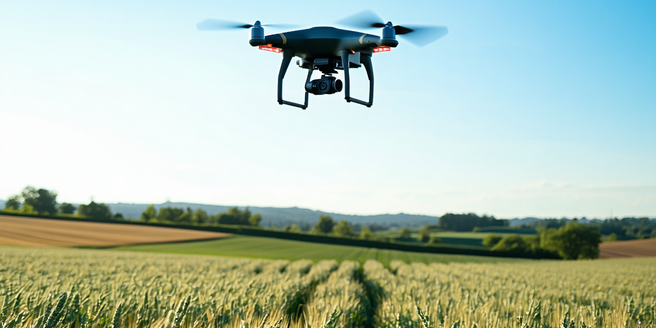Compact Drones For Aerial Travel Photography

Understanding the Basics of Compact Drones
Compact drones are revolutionizing aerial photography, offering both amateur and professional photographers an unprecedented advantage. These small, lightweight devices allow for exceptional mobility, making it easy to capture stunning aerial images without needing a full-sized drone. They typically come equipped with high-quality cameras that can deliver crisp photos and videos. Additionally, compact drones are generally more affordable, making them accessible to a wider audience. Whether you’re new to drones or looking to add a powerful new tool to your photography kit, understanding the basic components and capabilities of compact drones is crucial. They usually feature simplified controls, longer battery life, and advanced stabilization technology. By familiarizing yourself with these basics, you can ensure that you are choosing the right drone to meet your specific needs and maximize your aerial photography potential.
Key Features to Look for in Aerial Photography Drones
When selecting a drone for aerial photography, there are several key features to consider to ensure you achieve the best results. A high-resolution camera is essential, with at least 12 megapixels for quality stills and 4K capability for video. Look for drones with advanced stabilization technology, such as a 3-axis gimbal, to maintain smooth footage even in windy conditions. Battery life is another critical factor; longer flight times translate to more photography opportunities. Compact drones with GPS capability can offer features like follow-me mode and waypoint navigation, enhancing your creative control. Additionally, a drone with obstacle avoidance technology provides a safety net, enabling you to focus on capturing the perfect shot without worrying about potential hazards. By prioritizing these features, you can select a drone that excels in delivering stunning aerial images.
Best Compact Drones for Capturing Stunning Landscapes
For photographers looking to capture breathtaking landscapes, several compact drones stand out for their superior performance and portability. The DJI Mini 2 is a popular choice; it is lightweight and offers a robust set of features, including a 12 MP camera, 4x digital zoom, and 31 minutes of flight time. Another excellent option is the Autel Robotics EVO Nano+, which boasts a 4K HDR camera and advanced obstacle avoidance capabilities. The Skydio 2+ is renowned for its autonomous flying features, making it a top choice for capturing dynamic, complex shots. Each of these drones offers unique strengths, allowing photographers to capture stunning visuals from spectacular vantage points. When selecting a compact drone, consider the balance of camera quality, flight time, and additional features to best suit your landscape photography aspirations.
Tips for Shooting Aerial Photos While Traveling
Aerial photography while traveling offers countless rewards, but it requires careful planning and technique to achieve the best results. First, check for local regulations and any permits required for drone use in your travel destination. Study maps and scout locations in advance for striking compositions, such as coastal cliffsides or lush valleys. Utilize the golden hours—shortly after sunrise or before sunset—for optimal lighting conditions. It’s also wise to pack spare batteries and memory cards to ensure you’re fully prepared for extended shooting sessions. Practice piloting your drone in open areas before tackling complex shots, and consider using objects of interest like roads or rivers as leading lines to enhance visual appeal. By following these tips, you’ll capture diverse and stunning aerial photos that capture the essence of your travels.
Safety Considerations and Regulatory Compliance
When flying drones for aerial photography, safety and regulatory compliance are paramount. Before takeoff, familiarize yourself with the drone laws and restrictions specific to your location. Most countries require drones to be registered and have specific areas where flying is prohibited, such as near airports or crowded spaces. Understanding local airspace and weather conditions is crucial to prevent disruptions or accidents. Implement geofencing settings on your drone to avoid restricted areas. Equip your drone with obstacle avoidance technology to minimize the risk of collisions. Follow the manufacturer’s guidelines for maintenance and pre-flight inspections to ensure your drone operates smoothly. Practicing safe and compliant flying not only protects you and others but also ensures that you can continue your photography work without legal complications. Always prioritize safety as you explore creative skies with your drone.
Editing and Enhancing Aerial Drone Photographs
Post-processing is an integral part of aerial drone photography, allowing you to refine and enhance the images captured from above. Start by organizing your shots and selecting the best compositions for editing. Use photo editing software like Adobe Lightroom or Photoshop to adjust brightness, contrast, and saturation levels, ensuring your images are visually striking. Pay attention to color balance to accurately represent the photographed scenery. Crop and straighten the horizon if needed to enhance the composition. Consider using selective sharpening to bring out details in key areas without introducing noise. Applying gradual filters can replicate atmospheric conditions, adding depth to your photos. By dedicating time to thorough and skillful editing, you can elevate your drone-captured images from great to exceptional, showcasing each landscape’s true beauty and your photographic vision.